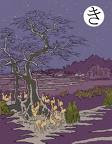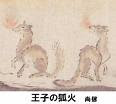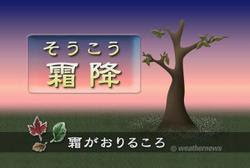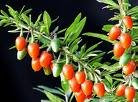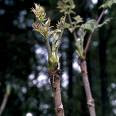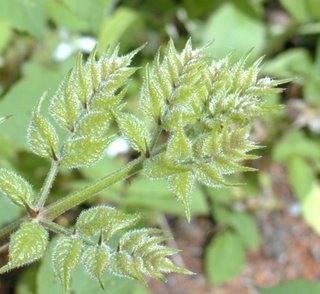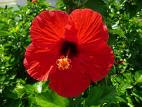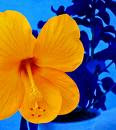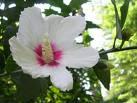::::::::::::::::::::::::::::::::::::::::::::::::::::::::::::::::::::::::::::::::::::::::::::::::::::
Herring (nishin)
***** Location: Japan
***** Season: Late Spring, others see below
***** Category: Animal
*****************************
Explanation
Herring, nishin 鰊 (にしん) , 鯡(にしん)、青魚(にしん)、
黄魚(にしん) ,
"fish that brings spring", 春告魚(にしん)
kado かど、kadoiwashi かどいわし
"Korean sardine", koorai iwashi 高麗鰯(こうらいいわし)
"running herring", hashiri nishin 走り鰊(はしりにしん)
first herring, hatsu nishin 初鰊(はつにしん)
middle herring, chuu nishin 中鰊(ちゅうにしん)
late herring, ato nishin 後鰊(あとにしん)
herring are coming, nishin kuki 鰊群来(にしんくき)
place for herrings, nishinba 鰊場(にしんば)
pot for cooking herring, nishingama 鰊釜(にしんがま)
roasting herring, nishin taku 鰊焚く(にしんたく)
:::::::::::::::::::::::::::::::::::::::::::::::::::::::::::::::::::::::::::::::::::::::::::::::::::
 Herrings are small, oily fish of the genus Clupea found in the shallow, temperate waters of the North Atlantic, the Baltic Sea, the North Pacific, and the Mediterranean. There are 15 species of herring, the most abundant of which is the Atlantic herring (Clupea harengus).[citation needed] Herrings move in vast schools, coming in spring to the shores of Europe and America, where they are caught, salted and smoked in great quantities.
Herrings are small, oily fish of the genus Clupea found in the shallow, temperate waters of the North Atlantic, the Baltic Sea, the North Pacific, and the Mediterranean. There are 15 species of herring, the most abundant of which is the Atlantic herring (Clupea harengus).[citation needed] Herrings move in vast schools, coming in spring to the shores of Europe and America, where they are caught, salted and smoked in great quantities.Canned "sardines" (or pilchards) seen in supermarkets may actually be sprats or round herrings.
Pickled herring is found in the cuisine of Hokkaidō in Japan, where families traditionally preserved large quantities for winter.
- - - More in the WIKIPEDIA !
:::::::::::::::::::::::::::::::::::::::::::::::::::::::::::::::::::::::::::::::::::::::::::::::::::::
kigo for all summer
herring in summer 夏鰊 (なつにしん) natsu nishin
*****************************
Worldwide use
Germany
Pickled vinegared herring, Rollmops
. . . CLICK here for Photos !
.............................................................................
Bückling (smoked herring)
kigo for winter
. . . CLICK here for Photos !
*****************************
Things found on the way
*****************************
HAIKU
Above the cedars
a Mother eagle hovers
scent of herring
- Angelika Kolompar Renville Bygott
:::::::::::::::::::::::::::::::::::::::::::::::::::::::::::::::::::::::::::::::::::::::::::::::::::
. Japanese Legends - 伝説 民話 昔話 – ABC-List .
............................................. Aomori 青森県
三戸郡 Sannohe district 五戸町
. kitsune densetsu 狐と伝説 fox legends .
A monk had been carrying nisshin 鰊 herring on his back on the way back to his temple.
But he was bewitched by a fox and lost them all.
- - - - -
. kitsune 狐 fox,sake 鮭 salmon
. A fox had cheated an old man,
telling him there were many herring in the river.
So the man left his luggage and went into the river to get them.
Meanwhile the fox took his luggage and run away.
. sake 鮭と伝説 legends about the salmon .
............................................. Fukushima 福島県
南会津郡 Minami-Aizu district
. neko 猫 / ねこ と伝説 Legends about cats, Katzen .
The cats belonging to the old woman オキシ O-Kitsu had survived for three generations.
Once a cat was seen leaving the house with a towel covering its head.
O-Kitsu gave it three 鰊 herrings and let it go.
............................................. Hokkaido 北海道
. kujira 鯨 whale - Walfisch .
Since olden times, the kujira 鰊 whale is
a special fish of Hokkaido 蝦夷 Ezo.
When the season comes, fishermen say special prayers and go out to sea.
In the second lunar month, it was not allowed to ring a large temple bell.
The vibrations of such a bell would be heared in the sea and the whales might disappear.
Words like whale, kitsune 狐 fox and awabi 蚫 were not allowed to use,
since these animals were enemies of the whale.
........................................
江差 Esashi
. Orii baasan 折居婆さん grandmother Orii .
and the origin of Ubagami Daijinguu 姥神大神宮 Ubagami Daijingu
Shrine ofr the "old woman deity"
........................................
函館市 Hakodate City
. Genko 玄狐 / Kurogitsune 黒狐 a black fox .
........................................
松前町 Matsumae town
. Matsumae Kaido 松前街道 Matsumae Highway .
and Genko 玄狐 / Kurogitsune 黒狐 a black fox -
A black furred fox that incarnated into the Big Dipper. -
- - - - -
. yamabushi 山伏 mountain priests .
The fishing season for herrings had been very bad,
so the villagers asked a Yamabushi for a purification ritual.
............................................. Niigata 新潟県
南魚沼市 Minami-Uonuma city
. Shanichi Sama, Shajitsu Sama 社日様
Deity of the Shrine Day .
and offerings of Herring soup.
............................................. Shiga 滋賀県
高島市 Takashima city
. kitsune densetsu 狐と伝説 fox legends .
Once a man went up to the mountain to gather chestnuts.
He picked up some chestnuts near the hole of a fox, so the fox bewitched him.
The farmer took some rice cakes and herring to apologize and soon
he got well again.
.......................................................................
- reference : Nichibun Yokai Database -
*****************************
Related words
- WASHOKU -
Sardines (iwashi 鰯 (いわし)) /
urume (潤目)うるめ round herring big-eye sardine
***** FISH and SEAFOOD SAIJIKI
:::::::::::::::::::::::::::::::::::::::::::::::::::::::::::::::::::::::::::::::::::::::::::::::::::::::::::::::::::::::::::
[ . BACK to DARUMA MUSEUM TOP . ]
[ . BACK to WORLDKIGO . TOP . ]
- #nishin #herring #nisshin -
:::::::::::::::::::::::::::::::::::::::::::::::::::::::::::::::::::::::::::::::::::::::::::::::::::::::::::::::::::::::::::
